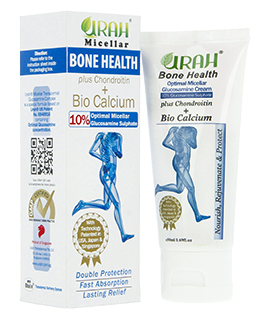
There are over 100 different conditions normally referred to as Arthritis but the most common of these are Osteoarthritis, Rheumatoid arthritis, Gout, Ankylosing spondylitis, Juvenile arthritis, Psoriatic arthritis and Lupus. The diagram below reflects the prevalence of these forms of arthritis in the US.
According to the US Centre for Disease Control and Prevention 1995 estimates, arthritis is the main cause of disabilities in the US. About 40 million people (1 in 7 persons) in America suffer from one form of arthritis or another, and it costs an average of US$6,000 per patient yearly (not including loss in productivity).
Conventional medications (chemotherapy) can be grouped into four classes:
Glucosamine as Chondroprotective Agent
Analgesics (Pain-relieving Drugs). Examples are Acetaminophen (Tylenol), Tramadol (Ultram), Capsaicin (Zostrix & Capzasin P). These class of drugs only provide temporary relief and can become additive. Analgesics do not relieve inflammation nor change progression of the disease.
Nonsteroidal Anti-Inflammatory Drugs (NSAID). Besides relieving inflammation, NSAIDs also reduce pain but they do not change the progression of the disease. Aspirin was the first NSAID. A hormone-like substance known as Prostaglandins is known to play a major role in inflammation. NSAID function by blocking the synthesis of prostaglandins. The do this by blocking the action of an enzyme, cyclooxygenase (COX), which is responsible for converting arachidonic acid to prostaglandins. But prostaglandins are, unfortunately, also needed to protect the lining of the stomach from acids. By destroying Prostaglandins, NSAIDs removes the protective mucus layer on the stomach lining exposing the stomach to acid attack (Gastrointestinal Toxicity). NSAIDs have been implicated in gastric irritation and bleeding, diarrhea, headache, hypertension, edema, stomach ulcers and liver damages.
Examples of NSAIDs are aspirin, ibuprofen, ketoprofen, naproxen, diclofenac, piroxicam, celecoxib and rofecoxib (Vioxx). Vioxx was recently withdrawn from the market due to side effects. NSAIDs relieve the symptoms of arthritis but do not stop the progression of the disease.
Corticosteroids: This class of drugs are mainly for suppressing inflammation caused by immune malfunctioning. Examples include hydrocortisone, prednisone and triamcinolone. These drugs are effective and safe only in the short run. Long-term treatment have been implicated in dramatic osteoporosis (thinning of the bone), obesity, diabetes, poor wound healing, high blood pressure and cataracts.
Disease-modifying Anti-rheumatic Drugs (DMARDs): These class of drugs seem to be able to slow down progression of autoimmune forms of arthritis such as rheumatoid arthritis. Most DMARDs are however quite toxic and frequently cause severe side effects. Examples of DMARDs are Auranofin (oral gold), hydroxychloroquine sulphate (antimalarial), cyclosporine, methotrexate and penicillamine.
The treatment and management of arthritis, especially osteoarthritis, has witnessed exciting development in the last 20 years since the discovery of the potentials of glucosamine. Glucosamine was first isolated in 1878 from chitin, the main component of exoskeletons (shells) and connective tissues of animals. In the 1950s, it was observed that glucosamine could stimulate increase production of proteoglycans and collagen when added to cultures of cartilage cells. In 1969, German physicians began to use an injectable form of glucosamine to treat osteoarthritis. Many scientific researches published in the last 10 years have provided evidences that glucosamine can relieve the pain and stops or slow the progression of osteoarthritis. And most excitedly is that glucosamine is very safe, with little or no side effects.
Though not conclusive, scientific research has provided enough evidences to convince medical physicians and veterinarians throughout Europe and the United States to now use glocosamine as the first-line of treatment for arthritis.
URAH Transdermal Glucosamine Cream
Urah Transdermal Glucosamine Cream is currently the most scientifically advanced Transdermal Glucosamine formulation in the market, with the capability to deliver Optimal benefits with lowest side effects. Our expertise in Bio-safe formulations has enabled us to produce high-end products to meet specific needs such as individual sensitivities, gender and medical diagnosis.
Fast & effective delivery of glucosamine to point of need Optimal concentration of glucosamine Quick and lasting relief Zero side effect
We produce tailor formulations fortified with other drugs or pro-drugs such as methylsulfonylmethane, Omega-3 essential fatty acids, chondroitin, vitamin C and natural extracts to enhance activity and to meet specific needs.
Click here to Check the Best Product for your Pain Condition
Click here for Urah users testimonies
Click here to Check the Quality of your Glucosamine Product before use

2025 © URAH Transdermal Pte Ltd. ALL Rights Reserved. Urah Privacy Policy | Terms of Service | Return Policy
Disclaimer: All contents on this website are provided for general information only, and should not be treated as a substitute for the medical advice of your Physician or any other health care professional. Urah is not responsible or liable for any diagnosis made by any user based on the content of this website. Always consult your own Physician if you're in any way concerned about your health. Urah Micellar Transdermal Cream formulae are not patented or under any patent rights.